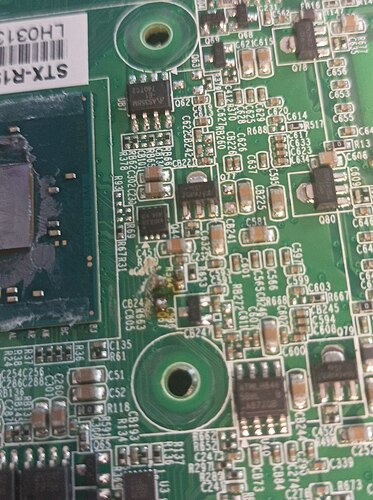A few days ago, my PBXact 40 failed after restarting. It might have a hardware issue or a corrupted system image. Every time I turn the device on, the power LED just keeps blinking, and the Ethernet LEDs behave the same way.
I already tried connecting via console, but the device isn’t sending a signal. I also connected a VGA monitor, but there’s no video output either.
It would sound to me like it might be dying or dead. You should at least get the bios boot screen when you turn it on with the monitor plugged in. Do you have another power supply to try?
I don’t have another power supply, but I have a multimeter, and the voltage from the power supply is correct—12V. Do you think it’s necessary to look for or buy another charger?
Not saying it’s the same cause, but I had a similar issue with my PBXact 100 several years ago. (Our HA meant that this wasn’t a big deal - everything failed over and the secondary handled calls.) I worked on it for 2 hours without making any headway before getting mad at it and left it on my bench unplugged over the weekend - Monday it started up and ran like a champ. A couple years later though, same symptom reappeared & it would not recover. Turned out to be the motherboard dying. Ended up getting a used (inactive) system off everyone’s favorite auction site, transplanted the MB, reactivated it with Sangoma, and our cluster was back to normal.
Really hoping your issue is something simpler… I do know that PSUs can output voltage in the proper range, but not enough amerage when they get old. That’s probably where I’d begin.
Thanks for the wishes. It has already been resting for more than two days, but it’s still the same; it doesn’t output video, not even from the BIOS.
Was working on something completely unrelated and saw that new PBX 40 power bricks are listed in the Sangoma Portal for $40 (part number PBR-SYS-0040).
Thanks
Save a buck
This is a long shot, but it’s saved a few PCs otherwise destined for the scrap pile. Have you tried a hard reset? Remove BIOS battery, unplug power, hold power button in for 5-10 seconds, reinstall battery, plug in, cross your fingers, and turn on…
I already opened the device and removed the BIOS battery. I pressed the power button for more than 20 seconds and also disconnected the hard drive and RAM before pressing the button. Then, I reconnected everything—memory, hard drive, and BIOS battery—but it still didn’t work.
did you check the power brick with a voltmeter ?
Yes, and the voltage is 12.2 V, meaning it is providing the correct voltage.
Usually a flashing led shows a power delivery issue. If the power test fine I would look over the board near where it plugs in for burnt components or swollen capacitors. Maybe with it powered off do some continuity checks on resistors. Image below it may be subtle but if the top of a capacitor is not completely flat it could be your issue
Is the voltage read under load?
Flashing could either be a BIOS early stage diagnostic, used before enough of the system is up to allow the use of the display, or it could be that the power supply is continually shutting down and restarting. The latter might not happen if the voltage is being checked with no load applied to the power supply.
I don’t know which hardware is used for PBXact, but the exact rate of flashing may indicate the nature of the fault, e.g. https://www.asus.com/uk/support/faq/1046157/ describes codes used by some Asus based systems.
One general thing to try with old hardware is to disconnect and reconnect all the plugin connectors, preferably taking precautions against static electricity. Oxide can build up, and reseating them can scrape that off.
You’re right, jfinstrom. I was able to remove the motherboard, and it looks like a capacitor is short-circuited. I haven’t tested it with a multimeter yet, but it appears to be damaged at first glance.
Condensator Kaput.
If you have off-box backups available, you can get your PBX back up and running on any hardware or VM. Install FreePBX 16 distro, release the hardware lock in the portal and activate the distro with your PBXact activation code, and it will magically become a PBXact… then restore your backup.
A capacitor isn’t too expensive. It’s easy to replace.
And why not replace all chemical capacitors anyway? If one breaks, there’s a good chance more capacitors will break in the future.
Thanks, I’ll look for them and try to replace each one. Regards.
I didn’t have backups, I only managed to recover the configuration files by accessing them through another Linux system, and from there, I did all the configuration. Thanks.


